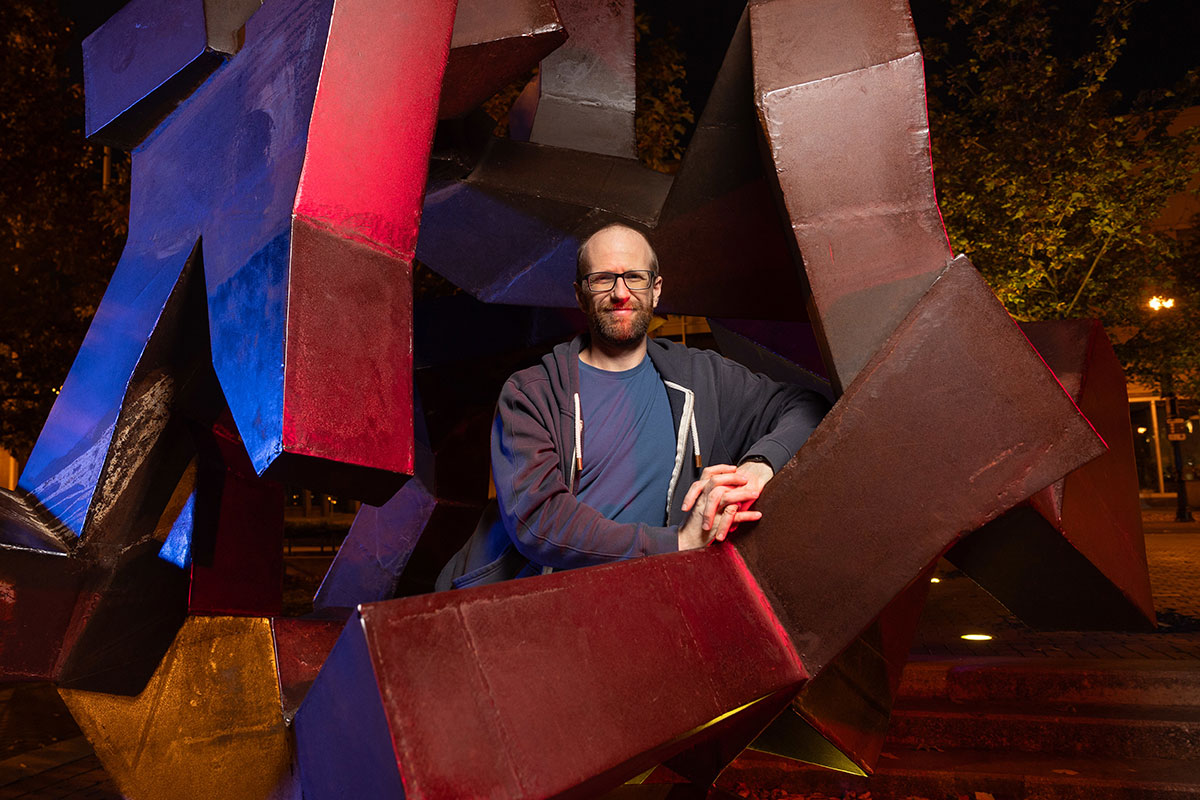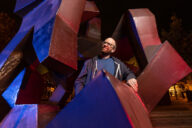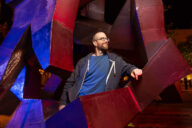
Counting shapes for the future
On a hot summer day in Hanoi, Vietnam, colleagues toss ideas back and forth. There are drawings on a chalkboard. Concepts bounce off each other. Rules bend, break or are cast aside entirely. Ideas that aren’t working are shelved in favor of exploring more solid options. Finally, a creative breakthrough. Clearly, this is a room full of mathematicians.
Steven Senger, associate professor of mathematics at Missouri State University, spent the summer of 2023 at the Vietnam Institute for Advanced Studies and Mathematics in Hanoi. There, he worked with colleagues from around the world.
“Think about mathematics research the way you might imagine songwriting,” said Senger. “There are rules, but it’s a very creative process.”
Senger wants everyone to understand that the process mathematicians use to unlock equations shares a lot with the process a film editor or a choreographer uses.
“People say ‘but there are rules and there’s an answer at the end.’” Senger said. “Yes, but also no.”
“Sure, there are rules governing the narrative arc, right? But if you intentionally break the rules, that can also be valuable. And people intentionally break the rules in mathematics all the time.”
In fact, breaking rules in math is a common occurrence. Sometimes, broken rules lead to new mathematical discoveries, culminating in published research.

Using shapes to map data
“I have the easiest research to explain,” Senger said. “Okay, you ready for this? I do geometric combinatorics. That means I count shapes.”
Imagine a plane full of dots, like a giant sheet of graph paper. Drawing lines between the dots creates shapes — squares, rectangles, triangles. Now, imagine you want to know all the shapes contained in these dot-to-dot connections. More importantly, you want to know all the repeating patterns that exist among the dots. Senger’s research unlocks how mathematicians create algorithms to find this answer.
Senger’s research is abstract. The applications of his research, however, are no longer simply theoretical.
Imagine that the graph paper is a floating field of drones, hovering over a quickly escalating forest fire. Using ideas from Senger and his colleagues, fire response teams can send a network of drones into a forest fire. The drone network collects data to determine where the fire is burning hottest, which helps the team form a plan for extinguishing the fire. This research has potential applications wherever people need to quickly collect a lot of data in a place that isn’t safe for humans, such as oil spills or chemical plumes.
The research has artistic purposes, too, like drone shows used to light up sporting events and city skies around the Fourth of July.
So, when Senger “counts shapes” he is really looking for geometric patterns in big data sets. Those patterns and shapes create a structure to take in a lot of information in the form of sensor networks. They also have applications in robotics and computer science.
One of the collaborators Senger works alongside is Eyvindur Ari Palsson.
Palsson said Senger “is at the forefront of understanding how the complexity of the pattern impacts these questions.”
Small advancements add up
Math discoveries can take a long time. Research moves forward incrementally. In fact, the main research question Senger explores, called the Unit Distance Problem, was originally posited in 1946 by a Hungarian mathematician named Paul Erdős. Erdős asked: How many pairs of points in a set of “N” points could be at a specific distance from each other? Another way of asking this is: how many times can a shape or pattern repeat in a big data set of points?
When Senger was in grad school, he unlocked one part of the puzzle. He published it in his dissertation. Years later, some colleagues contacted him when they figured out how to expand on Senger’s research. The three published their research in the Journal of the London Mathematical Society.
Senger collaborates with mathematicians across the globe to work on these studies. It is another way that he says math feels like an inherently creative process. In a globally connected field like math, people around the world work independently to move an idea forward, then come together to share their findings.

Learning from students
Other important collaborators in Senger’s research are his students. Caleb Marshall did an independent study with Senger. Marshall, not originally a math student, had to dive into Senger’s research headfirst. Marshall’s fresh set of eyes helped him identify new, creative solutions. At first, Senger was concerned that Marshall wasn’t understanding the concepts.
“I just kept saying, ‘No it’s going to fall like this,'” Senger said. “And he just didn’t get it…until eventually I realized it was me who didn’t get it. Caleb was right and I was wrong.”
Together, along with fellow math department faculty member Shelby Kilmer, they unlocked another part of the dot product puzzle.
Marshall describes Senger as “the kind of mentor and collaborator that can inspire an entire career’s worth of imagination and passion for mathematics.” Marshall also notes Senger “is, at once, both a seasoned researcher and writer, and manages to remain approachable and friendly with his students.”
Shaping the future of dot product research
Senger’s work has the potential to extend to places he hasn’t even thought of yet. Senger thinks the study of dot products has the potential to improve existing artificial intelligence algorithms — or even help create new ones.
“I’m just excited by the idea that people could understand things, you know?” he said.
Further reading
- Story by Katherine Whitaker
- Photos by Jesse Scheve

